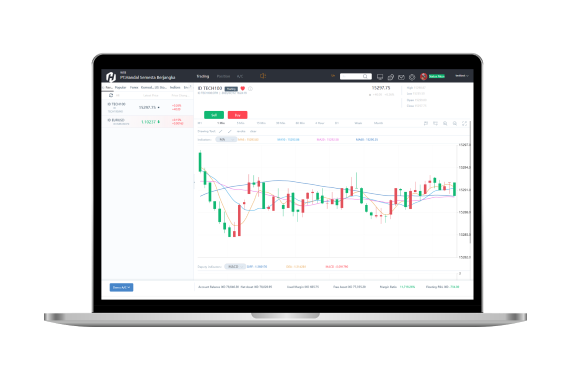Trading
-
Trading
Promo HOT
-
Produk
-
Platforms
-
Edukasi
-
Partnership
-
Perusahaan
-
Language
- Buka Akun Demo Login
NZD/USD melibatkan pasangan mata uang Dolar Selandia Baru dan Dolar Amerika Serikat. Pasangan ini mencerminkan berapa banyak Dolar Amerika Serikat yang diperlukan untuk membeli satu Dolar Selandia Baru Pergerakan harga NZD/USD dapat berubah secara dinamis, sehingga membtuhkan manajemen risiko yang baik, tetap mengikuti perkembangan pasar, dan gunakan strategi trading yang sesuai dengan tujuan dan toleransi risiko Anda.
NZD/USD melibatkan pasangan mata uang Dolar Selandia Baru dan Dolar Amerika Serikat. Pasangan ini mencerminkan berapa banyak Dolar Amerika Serikat yang diperlukan untuk membeli satu Dolar Selandia Baru Pergerakan harga NZD/USD dapat berubah secara dinamis, sehingga membtuhkan manajemen risiko yang baik, tetap mengikuti perkembangan pasar, dan gunakan strategi trading yang sesuai dengan tujuan dan toleransi risiko Anda.
Margin Level
| Level | Ukuran Lot per Trading | Margin |
| Level 1 | 0-200 | 0.5% |
| Level 2 | 200-500 | 1.00% |
| Level 3 | 500-10000 | 2.00% |
Jadwal (GMT+7)
| Hari | Waktu Trading |
| Senin | 06:00 - 24:00 WIB |
| Selasa | 00:00 - 05:00, 05:15 - 24:00 WIB |
| Rabu | 00:00 - 05:00, 05:15 - 24:00 WIB |
| Kamis | 00:00 - 05:00, 05:15 - 24:00 WIB |
| Jumat | 00:00 - 05:00, 05:15 - 24:00 WIB |
| Sabtu | 00:00 - 05:00, 05:15 - 24:00 WIB |
* Data di atas berdasarkan pada jenis "Akun Mini" di HSB

Nilai tukar NZD/USD dipengaruhi oleh faktor-faktor seperti data ekonomi, suku bunga, peristiwa geopolitik, dan sentimen pasar.
Waktu terbaik untuk memperdagangkan NZD/USD dapat bervariasi tergantung pada strategi trading masing-masing individu. berikut periode yang bisa dijadikan pertimbangan biasanya dimulai sekitar pukul 21:00 dan 02:00 GMT.
Pasangan mata uang forex ini baik untuk ditradingkan antara sesi New York dan Wellington yang sering kali menunjukkan peningkatan aktivitas dan volatilitas dalam NZD/USD.
